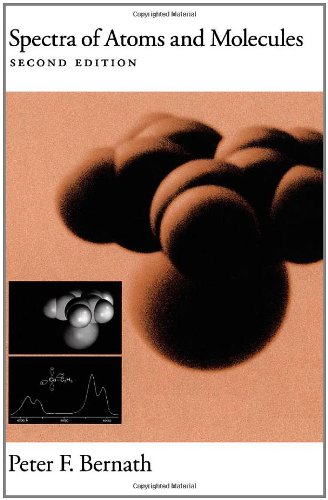Spectra of Atoms and Molecules epub
Par richardson robin le vendredi, mai 6 2016, 02:17 - Lien permanent
Spectra of Atoms and Molecules. Peter F. Bernath

Spectra.of.Atoms.and.Molecules.pdf
ISBN: 0195075986,9780195075984 | 405 pages | 11 Mb

Spectra of Atoms and Molecules Peter F. Bernath
Publisher: Oxford University Press
A spectrometer is an instrument, which is used to study the light spectrum. An atom or molecule that is reasonably isolated (such as in a gas at ordinary temperatures and pressures) will radiate a discrete set of frequencies called a line spectrum. The dense molecular clouds where stars form typically have a rich chemical composition. Although you can apply the lock-in technique in several fields, the following example presents a light measurement application that you can expend to spectroscopy, nuclear, atomic, molecular, and optical applications. There are of course other methods by which atomic-resolution molecular structures can be obtained, such as by nuclear magnetic resonance (NMR) spectroscopy or crystallography. Now, researchers from China, Spain and Sweden STM combined with another method called Raman spectroscopy to determine not only the form but also constituent atoms of a single molecule. Single atoms or molecules emit light in a form called line spectra. Spectrometry is the study of the light spectra, to accomplish a task like this; scientists use devices called “Spectrometers”. LIBS spectroscopy identifies the elemental breakage emissions (atomic and molecular) generated after excitement from a high energy laser 'spark'. Now, researchers from China, Spain, and Sweden have combined STM with another method called Raman spectroscopy to determine not just the shape, but also the constituent atoms of a single molecule. The second Bohr's paper is dedicated to more complicated applications of Bohr's theory to other atoms and molecules. Bohr knew the result he wanted to get - the 1/n^2 spectrum of the atom. This feature will calculate in the background a simulation of the spectrum of the molecular structure present in the spectral window, highlighting the expected chemical shifts when the user hovers the mouse over a proton or a carbon. "If you point a telescope to the sky, you see spectral lines that are very specific to a certain molecule or atom," said Pavanello.